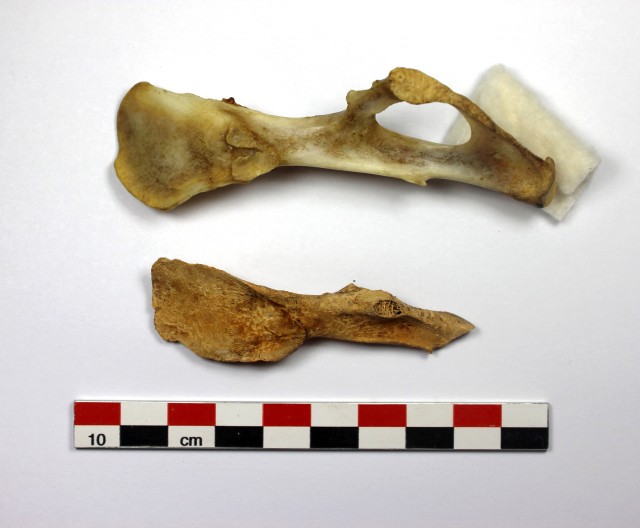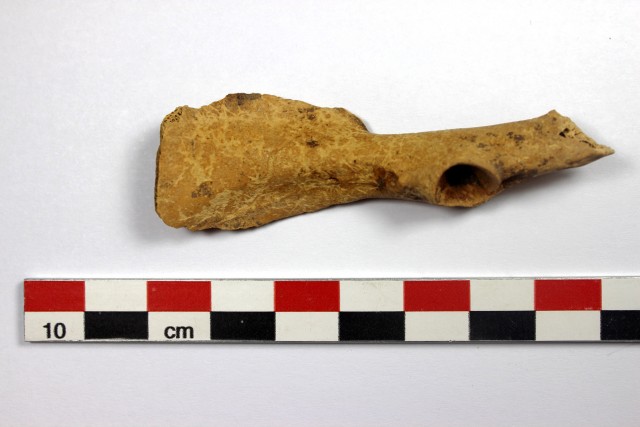- Home
- >
- Preservation Archaeology Blog
- >
- Bunny Innominates

(March 30, 2016)—I recently finished analyzing animal bone from the Black Mountain site outside Deming, New Mexico, where Dr. Katy Putsavage (Eastern New Mexico University) led excavations from 2010–2012. One of the last bags I analyzed contained an interesting item: a jackrabbit hip-bone (or innominate) with the very end cut off. (That’s the iliac crest, for you zooarchaeology nerds out there.)

It might not look like much, but I was pretty excited to find this funny little tool! These items have been found in only a few other sites in the Southwest. Two of those sites are in the Mimbres region, like the Black Mountain site. In the 1980s, Dr. Harry Shafer’s excavations at the NAN Ranch site recovered many of these tools. Brian Shaffer documented 186 of them in his 1991 Master’s thesis; he found 182 jackrabbit bone examples like Katy’s, and just four made from cottontail bone. A few more have been found at the Old Town site, another large Mimbres site south of NAN Ranch where Dr. Darrell Creel directed excavations in the 1990s and 2000s.
Oddly enough, the third place where I’ve heard of these tools being found is in the Salinas Pueblo Missions National Monument area, a group of much later sites well east of the Mimbres area. I’ve never seen those examples, just heard tantalizing rumors.
The examples of these tools from NAN Ranch are heavily ground, with extensive polishing and abrasion marks on the cut ends. Some researchers have guessed they were used for activities varying from working hides to shucking corn, but their appearance in only four archaeological sites is puzzling. Why would a tool for such everyday activities be found in only a few sites?

Katy’s example from Black Mountain doesn’t appear to have been used much. The removal of the end looks quite fresh, and there is very little polishing on the bone. It’s possible this tool wasn’t quite finished yet—I noticed a similar example in the NAN Ranch collections at the Western New Mexico University Museum in Silver City a few months ago. The removal of the end is too straight and purposeful to have been an accidental breakage, and looks markedly different from the hundreds of broken bunny innominates from the site.
I was excited to finally find an example of this “mystery artifact” in an assemblage I analyzed, even though I have no idea how people used it. If you’ve seen these elsewhere or know anything about them, Katy and I would love to hear about it!